For More Than A Century, Scientists Have Been Fascinated By The Jet That Forms After A Drop Impacts A
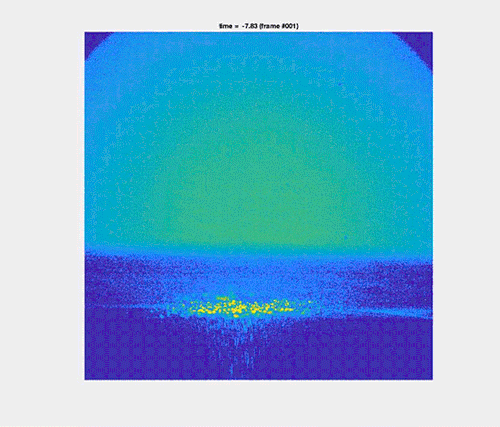
For more than a century, scientists have been fascinated by the jet that forms after a drop impacts a liquid. In this study, researchers tracked fluorescent particles in the fluid to understand the velocity and acceleration of flow inside the jet. (Image and research credit: C. van Rijn et al.; via APS Physics; submitted by Kam-Yung Soh)
More Posts from Sidusglacies and Others



Where cold and warm air meet, our atmosphere churns with energy. From the turbulence of supercell thunderclouds to the immense electrical discharge of lightning, there’s much that’s breathtaking about stormy skies. Photographer Dustin Farrell explores them, with a special emphasis on lightning, in his short film, “Transient 2″.
As seen in high-speed video, lightning strikes begin with tree-like leaders that split and spread, searching out the path of least resistance. Once that line from cloud to ground is discovered, electrons flow along a plasma channel that arcs from sky to earth. The estimated temperatures in the core of this plasma reach 50,000 Kelvin, far hotter than the Sun’s surface. It’s this heating that generates the blue-white glow of a lightning bolt. The heating also expands the air nearby explosively, producing the shock wave we hear as a crash of thunder. (Images and video credit: D. Farrell et al.; via Colossal)
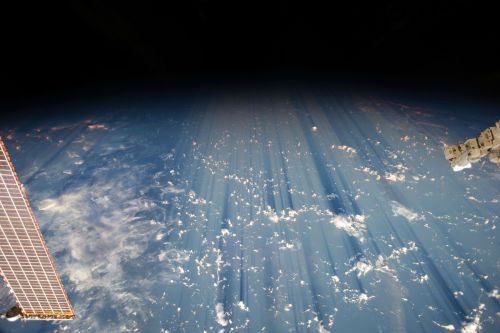
Clouds casting thousand-mile shadows when viewed from the ISS

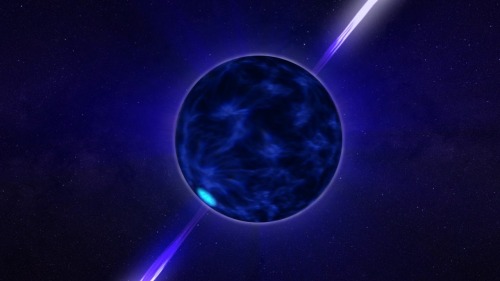
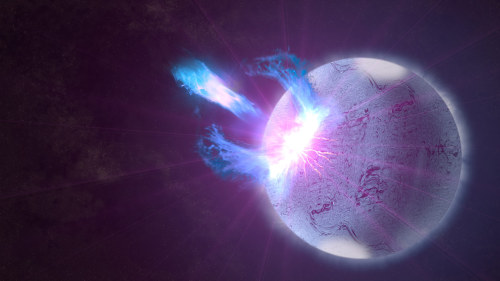
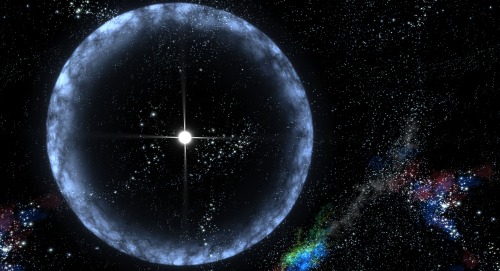
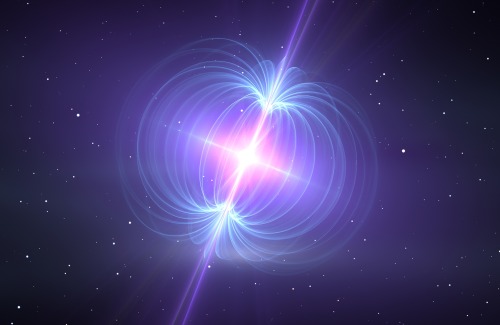
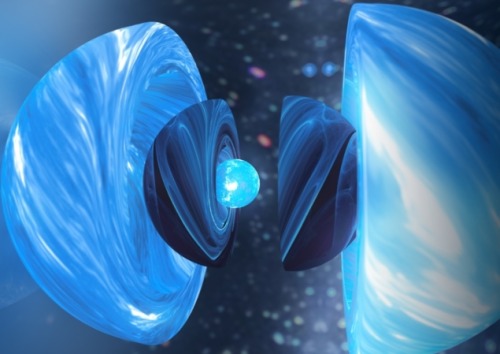
Starquakes
Sometimes a neutron star will undergo a glitch, a sudden small increase of its rotational speed or spin up. Glitches are thought to be the effect of a starquake—as the rotation of the neutron star slows, its shape becomes more spherical. Due to the stiffness of the “neutron” crust, this happens as discrete events when the crust ruptures, creating a starquake similar to earthquakes. After the starquake, the star will have a smaller equatorial radius, and because angular momentum is conserved, its rotational speed has increased.
Starquakes occurring in magnetars, with a resulting glitch, is the leading hypothesis for the gamma-ray sources known as soft gamma repeaters.
Recent work, however, suggests that a starquake would not release sufficient energy for a neutron star glitch; it has been suggested that glitches may instead be caused by transitions of vortices in the theoretical superfluid core of the neutron star from one metastable energy state to a lower one, thereby releasing energy that appears as an increase in the rotation rate. (source)

david_shute

Saturn as seen from its moon Enceladus, illustrated by Chesley Bonestell, 1972.

Neighboring planets, painted by Don Dixon, 1978.

AI USED TO SHOW HOW HYDROGEN BECOMES A METAL INSIDE GIANT PLANETS
Researchers have used a combination of AI and quantum mechanics to reveal how hydrogen gradually turns into a metal in giant planets.
Dense metallic hydrogen – a phase of hydrogen which behaves like an electrical conductor – makes up the interior of giant planets, but it is difficult to study and poorly understood. By combining artificial intelligence and quantum mechanics, researchers have found how hydrogen becomes a metal under the extreme pressure conditions of these planets.
The researchers, from the University of Cambridge, IBM Research and EPFL, used machine learning to mimic the interactions between hydrogen atoms in order to overcome the size and timescale limitations of even the most powerful supercomputers. They found that instead of happening as a sudden, or first-order, transition, the hydrogen changes in a smooth and gradual way. The results are reported in the journal Nature.
Hydrogen, consisting of one proton and one electron, is both the simplest and the most abundant element in the universe. It is the dominant component of the interior of the giant planets in our solar system – Jupiter, Saturn, Uranus, and Neptune – as well as exoplanets orbiting other stars.
At the surfaces of giant planets, hydrogen remains a molecular gas. Moving deeper into the interiors of giant planets however, the pressure exceeds millions of standard atmospheres. Under this extreme compression, hydrogen undergoes a phase transition: the covalent bonds inside hydrogen molecules break, and the gas becomes a metal that conducts electricity.
“The existence of metallic hydrogen was theorised a century ago, but what we haven’t known is how this process occurs, due to the difficulties in recreating the extreme pressure conditions of the interior of a giant planet in a laboratory setting, and the enormous complexities of predicting the behaviour of large hydrogen systems,” said lead author Dr. Bingqing Cheng from Cambridge’s Cavendish Laboratory.
Experimentalists have attempted to investigate dense hydrogen using a diamond anvil cell, in which two diamonds apply high pressure to a confined sample. Although diamond is the hardest substance on Earth, the device will fail under extreme pressure and high temperatures, especially when in contact with hydrogen, contrary to the claim that a diamond is forever. This makes the experiments both difficult and expensive.
Theoretical studies are also challenging: although the motion of hydrogen atoms can be solved using equations based on quantum mechanics, the computational power needed to calculate the behaviour of systems with more than a few thousand atoms for longer than a few nanoseconds exceeds the capability of the world’s largest and fastest supercomputers.
It is commonly assumed that the transition of dense hydrogen is first-order, which is accompanied by abrupt changes in all physical properties. A common example of a first-order phase transition is boiling liquid water: once the liquid becomes a vapour, its appearance and behaviour completely change despite the fact that the temperature and the pressure remain the same.
In the current theoretical study, Cheng and her colleagues used machine learning to mimic the interactions between hydrogen atoms, in order to overcome limitations of direct quantum mechanical calculations.
“We reached a surprising conclusion and found evidence for a continuous molecular to atomic transition in the dense hydrogen fluid, instead of a first-order one,” said Cheng, who is also a Junior Research Fellow at Trinity College.
The transition is smooth because the associated ‘critical point’ is hidden. Critical points are ubiquitous in all phase transitions between fluids: all substances that can exist in two phases have critical points. A system with an exposed critical point, such as the one for vapour and liquid water, has clearly distinct phases. However, the dense hydrogen fluid, with the hidden critical point, can transform gradually and continuously between the molecular and the atomic phases. Furthermore, this hidden critical point also induces other unusual phenomena, including density and heat capacity maxima.
The finding about the continuous transition provides a new way of interpreting the contradicting body of experiments on dense hydrogen. It also implies a smooth transition between insulating and metallic layers in giant gas planets. The study would not be possible without combining machine learning, quantum mechanics, and statistical mechanics. Without any doubt, this approach will uncover more physical insights about hydrogen systems in the future. As the next step, the researchers aim to answer the many open questions concerning the solid phase diagram of dense hydrogen.
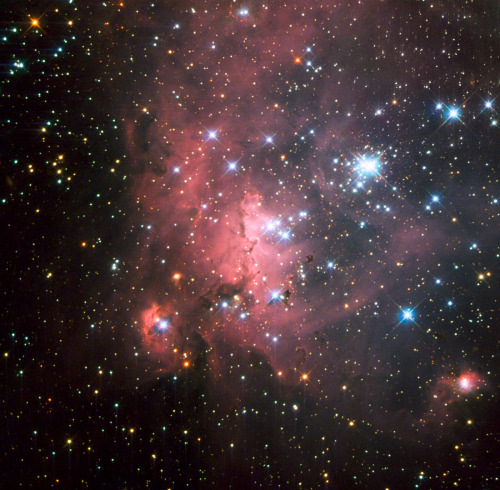
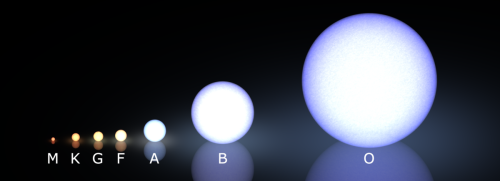

OB star
OB stars are hot, massive stars of spectral types O or early-type B that form in loosely organized groups called OB associations. They are short lived, and thus do not move very far from where they formed within their life. During their lifetime, they will emit much ultraviolet radiation. This radiation rapidly ionizes the surrounding interstellar gas of the giant molecular cloud, forming an H II region or Strömgren sphere. (source)
-
 bjackfuller reblogged this · 7 months ago
bjackfuller reblogged this · 7 months ago -
 drawmotivation liked this · 3 years ago
drawmotivation liked this · 3 years ago -
 magicalflowerlight liked this · 3 years ago
magicalflowerlight liked this · 3 years ago -
 virginiacruz liked this · 3 years ago
virginiacruz liked this · 3 years ago -
 bjackfuller reblogged this · 3 years ago
bjackfuller reblogged this · 3 years ago -
 soulless-blunder liked this · 3 years ago
soulless-blunder liked this · 3 years ago -
 dutchessdemented reblogged this · 3 years ago
dutchessdemented reblogged this · 3 years ago -
 dutchessdemented liked this · 3 years ago
dutchessdemented liked this · 3 years ago -
 missrupy liked this · 3 years ago
missrupy liked this · 3 years ago -
 fatcatatheart reblogged this · 3 years ago
fatcatatheart reblogged this · 3 years ago -
 photosaucee reblogged this · 3 years ago
photosaucee reblogged this · 3 years ago -
 photosaucee liked this · 3 years ago
photosaucee liked this · 3 years ago -
 sashaexmachina liked this · 3 years ago
sashaexmachina liked this · 3 years ago -
 vibescyber liked this · 3 years ago
vibescyber liked this · 3 years ago -
 frankensteinmeetsthewolfman liked this · 3 years ago
frankensteinmeetsthewolfman liked this · 3 years ago -
 mahakalmagick reblogged this · 3 years ago
mahakalmagick reblogged this · 3 years ago -
 mahakalmagick liked this · 3 years ago
mahakalmagick liked this · 3 years ago -
 gorjuss-bianca reblogged this · 3 years ago
gorjuss-bianca reblogged this · 3 years ago -
 olycam liked this · 3 years ago
olycam liked this · 3 years ago -
 massivepersonaskeletonmaker liked this · 3 years ago
massivepersonaskeletonmaker liked this · 3 years ago -
 kryptyd liked this · 3 years ago
kryptyd liked this · 3 years ago -
 mayleeunu liked this · 3 years ago
mayleeunu liked this · 3 years ago -
 silly-ehggy liked this · 3 years ago
silly-ehggy liked this · 3 years ago -
 otterfire reblogged this · 3 years ago
otterfire reblogged this · 3 years ago -
 otterfire liked this · 3 years ago
otterfire liked this · 3 years ago -
 drummerofthought reblogged this · 3 years ago
drummerofthought reblogged this · 3 years ago -
 marcosm-onofre liked this · 3 years ago
marcosm-onofre liked this · 3 years ago -
 no-reason-at-all liked this · 4 years ago
no-reason-at-all liked this · 4 years ago -
 sidusglacies reblogged this · 4 years ago
sidusglacies reblogged this · 4 years ago -
 skybunnytease liked this · 4 years ago
skybunnytease liked this · 4 years ago -
 haydena212 liked this · 4 years ago
haydena212 liked this · 4 years ago -
 nineoftoads reblogged this · 4 years ago
nineoftoads reblogged this · 4 years ago -
 aquatealturquoise reblogged this · 4 years ago
aquatealturquoise reblogged this · 4 years ago -
 mamasnu liked this · 4 years ago
mamasnu liked this · 4 years ago -
 oniongrass liked this · 4 years ago
oniongrass liked this · 4 years ago -
 stubbornasacat reblogged this · 4 years ago
stubbornasacat reblogged this · 4 years ago -
 stubbornasacat liked this · 4 years ago
stubbornasacat liked this · 4 years ago -
 ajax-daughter-of-telamon reblogged this · 4 years ago
ajax-daughter-of-telamon reblogged this · 4 years ago -
 laughing-thrush reblogged this · 4 years ago
laughing-thrush reblogged this · 4 years ago -
 adrien-noir1798 liked this · 4 years ago
adrien-noir1798 liked this · 4 years ago -
 kuwaneko reblogged this · 4 years ago
kuwaneko reblogged this · 4 years ago -
 bighonkas liked this · 4 years ago
bighonkas liked this · 4 years ago -
 saveit4later reblogged this · 4 years ago
saveit4later reblogged this · 4 years ago
